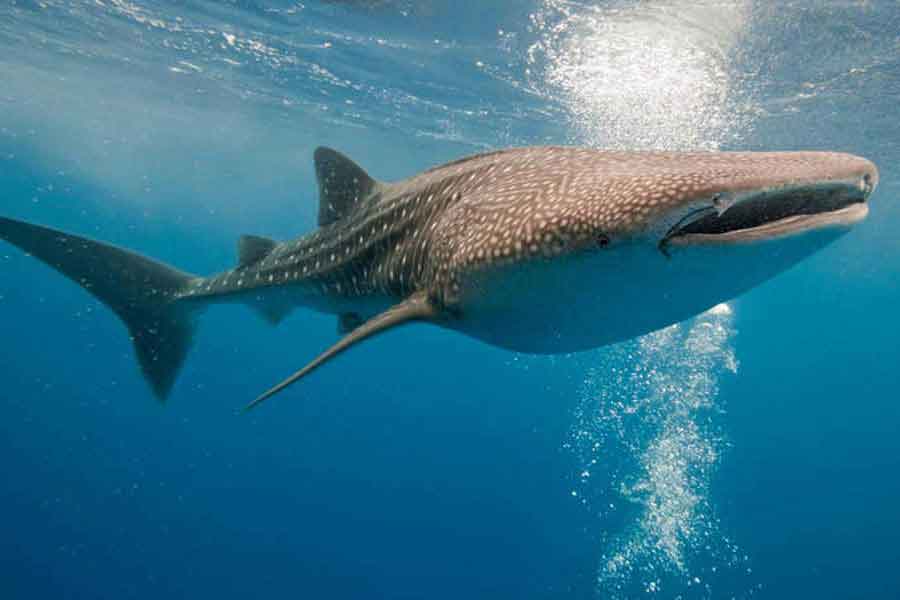
There is still much that we don’t know about the world’s largest fish, the whale shark. This animal can reach a maximum length of 18 meters and is found in temperate seas worldwide.
One of the great mysteries was their reproductive behavior, which was completely unknown. The dilemma was recently resolved when a group of scientists in Taiwan, led by Dr. Eugenie Clark, were able to observe a 12-meter-long female that had been harpooned by a local fisherman. The surprise was immense when they found 300 embryos measuring between 40 and 63 centimeters in length in two twin uteruses. Fifteen of them were still alive at the time of the examination.
This number of offspring far exceeds the records of any other shark species. Scientists believe that in larger females, an even greater number of embryos could be found, as this particular female had not yet reached her maximum size. This definitively proves that whale sharks are ovoviviparous, meaning that the embryos develop in eggs that hatch inside the mother and are then expelled through the uterine canal.
Scientists still do not know exactly how long a whale shark lives. However, it is known that some shark species, which live up to a hundred years, are not ready to reproduce until they are twenty years old. This means that they require one-fifth of their life to reach sexual maturity. Apparently, the whale shark is not capable of reproducing until it reaches thirty years of age. So, if thirty years represents one-fifth of its lifespan, this could mean that they could live 150 years or more.
Whale sharks are often captured for commercial purposes, either to extract the large amount of oil stored in their livers (an adult male can contain up to 1,600 liters of oil) or to consume their meat. Based on these factors, their market value is calculated. Perhaps this value should be reconsidered in the future, as the whale shark proves to be an excellent tourist attraction. Especially considering that divers from the United States alone spend around 1.4 billion dollars annually on diving trips.
This gentle giant with slow movements allows divers to approach and have a unique experience that takes them even across the world just to touch its rough skin. Perhaps it is this contact that will save such a spectacular animal.
«You cannot defend what you do not love, and you cannot love what you do not know.»

